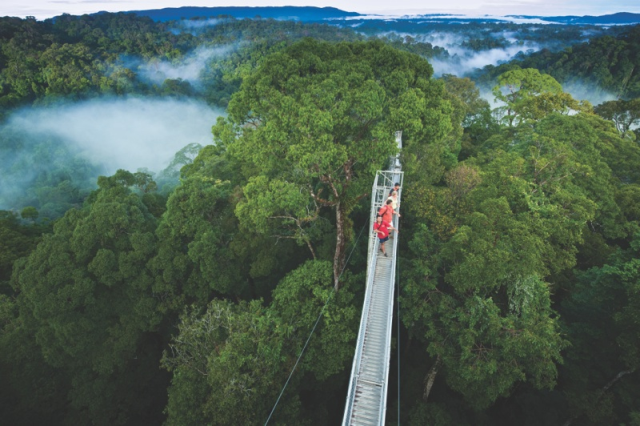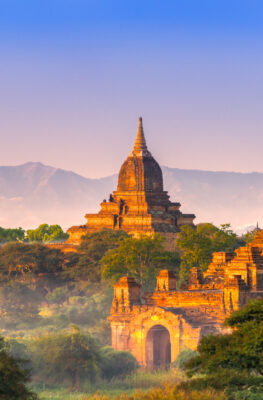Published on June 30, 2014
A couple of years ago the UN World Tourism Organisation (UNWTO) revealed a series of tourism trends in Asia Pacific[1]. A few of those are relevant for South East Asia’s tourism development. To start with, a very positive trend for the region is that Asia’s tourism is growing comfortably above the world average and will continue to do so over the next decade. Another trend influencing tourism to the region tells us that present-day tourists are far more active than previous generations. In addition, experiencing interesting things are felt to be of more importance than looking at them (i.e. sightseeing); participation in a host of activities (from agricultural to socio-cultural) is the prevailing mode, nowadays.
These trends are easy to underpin by facts. For one, tourist arrivals to SEA countries grew by a whopping 125% over the last ten years. Secondly, Eco-tourism and Community Based Tourism (CBT) – both aimed at experiencing nature and village based life – are widely spread over South East Asia. Thirdly, ‘Adventure Tourism’ has become a growth market, integrating travellers’ hobbies and lifestyles.
In that respect, having devoted last month to the introduction of SEA’s incredible variety of festivals, this month Adventure Tourism will be the thematic topic, to which ASEAN commissioned a study, recently; therein, it describes the Adventure markets and explains the differences between Soft and Hard Adventure[2].
Bungee jumping from the Kuala Lumpur Tower could be the thrill of a lifetime for a sportive septuagenarian on the one hand, not more than a tick off the ‘list of things to do before 30’, on the other. Thus, soft and hard are relative concepts, partially depending on the level of skills one has achieved.
Per definition soft adventure is a leisurely activity that requires little or no experience and bears low risk, yet going beyond the typical tourist programme. 90% of all adventure tourism is soft and particularly suited to what’s called inter-generational travellers (from grandparents to grandchildren). In this article the emphasis therefore is on soft adventure. Horseback riding, kayaking, hiking, biking, snow- and water skiing are part of it; not too strenuous wilderness tours as well.
Hard adventure requires a greater level of skills and capacities, while more risk is involved. Activities such as paragliding, rock-climbing and parachuting belong to this category that fits the lifestyle of a more individual and younger type of tourist.
Other activities, notably bungee jumping and white-water rafting, could be both hard and soft, pending one’s experience and skills therein, and perceived risk and scariness associated.
With some 37 million of all tourists in South East Asia reportedly engaging in some form of soft adventure it has become a market not to be neglected; which ASEAN definitely doesn’t do as it has a great variety of Soft Adventure tours on offer.
So, let’s go for a gentle ride.

Kayaking in Halong Bay, Vietnam. Source: www.halongphoenixcruise.com
How about kayaking in Halong Bay (Vietnam), one of the seven new World Wonders? Peddling through a vast and majestic landscape of Karst rock formations rising from the seabed will be etched on your mind forever.
Or, what to think of some light mountain biking in the North of Cambodia, a not well trodden, beautiful part of that country?
Alternatively, head on to the south of Thailand to join a Jungle Safari, including an elephant trek and a walk in a rainforest, all from your base on world-class Phuket island.

Elephant Trek in Chiang Mai, Thailand. Source: Tourism Authority Thailand (TAT)
Equally trilling is trekking mountainous terrains and water rafting in Chiang Mai where you can stay comfortably in bamboo bungalows and live in wilderness of the forest, using elephants to carry supplies and porter you across streams and marshes. A short stay at Hill Tribe village in the North of Thailand will guarantee you the most authentic of experience (http://www.all-thailand-exp.com).
If that doesn’t fit the bill, may be you would like to do some snorkelling in seldom-visited waters around Cabilao island, one of the best marine protected areas of the Philippines; or hiking to home-stay at a longhouse in Sarawak (Malaysia); Indoor sky diving in the world’s first largest vertical wind tunnel at Singapore’s Sentosa Island, or Cable water skiing at Singapore’s East Coast Lagoon; trekking in the highlands of Northern Laos or on Myanmar’s part of the Silk Road? The opportunities are boundless as further articles, highlighting each country’s soft adventure stock, will prove.

Pictorial view of Cabilao Island Marine Sanctuary, the Philippines. Source: www.divescotty.com
It’s all there for you to consume at your own pace, with many renowned tour operators catering for these and many other exciting tours; for instance, to round it off, the Canopy Walkway in Temburong’s National Park (Brunei) or another trek through the rivers and dense jungle of Indonesia to try and get a glimpse of Sumatra’s Orang-utans.

Canopy Walkway, Temburong National Park, Brunei Darussalam. Source: www.borneoadventure.com
South East Asia’s Soft adventure: tailor made at your wish and convenience.






